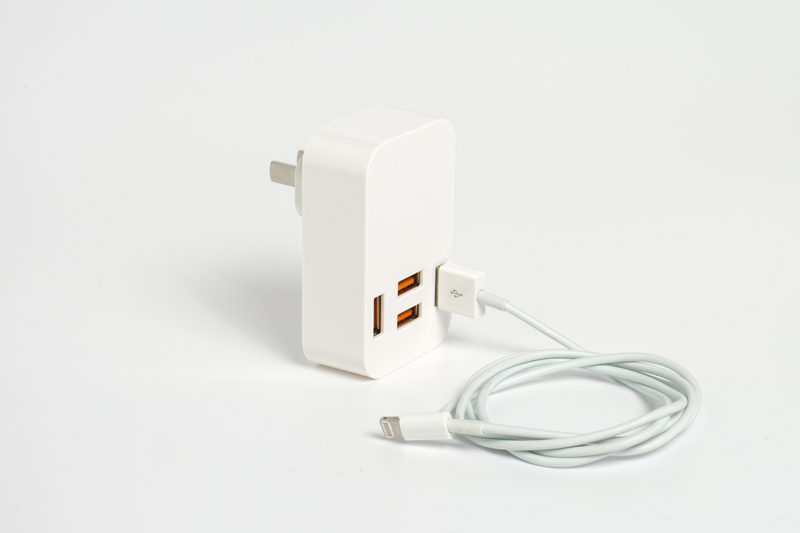Master Long-Term Sofa Protection with Expert Tips
Posted on 18/05/2025
Master Long-Term Sofa Protection with Expert Tips
A sofa is more than just a piece of furniture--it's the heart of your living room, a gathering spot for friends and family, and often a significant investment. Long-term sofa protection is crucial for maintaining its comfort, beauty, and value over the years. With daily use, exposure to spills, pets, kids, and the natural aging process, your couch's longevity hinges on how well you care for it. In this comprehensive guide, we'll share expert tips and strategies to shield your sofa from wear and tear, ensuring it looks as inviting as the day you bought it.

Why Is Long-Term Sofa Protection Important?
Your sofa endures a lot. From accidental coffee spills to muddy pet paws, the challenges to sofa longevity are endless. Proper protection not only keeps your couch looking new but also extends its lifespan, saving you money and avoiding frequent replacements. Investing time and effort in proper care ensures your sofa remains a centerpiece in your home for years.
The Top Threats to Your Sofa's Lifespan
- Stains and Spills: Accidents happen, and without immediate attention, liquids can penetrate upholstery fibers.
- Fading: Sunlight exposure can bleach out fabric and leather colors.
- Wear and Tear: Everyday use causes cushions to sag and fabrics to thin.
- Pet Damage: Scratches, fur, and odors can be tough to manage.
- Dirt and Dust: Accumulated debris degrades fabrics and hides allergens.
Expert Strategies for Long-Term Sofa Protection
Let's explore actionable, expert-backed tips to accomplish proactive sofa preservation, giving you peace of mind and a fresh-looking couch.
1. Use Quality Sofa Covers and Throws
One of the most effective methods for protecting your sofa long-term is using washable covers or stylish throws. These not only add a decorative touch but also serve as the first line of defense against spills, stains, and pet hair.
- Choose the right material: Opt for covers made of durable, easy-to-clean materials like cotton, microfiber, or polyester blends.
- Ensure a snug fit: Well-fitted covers prevent bunching and slipping, maintaining the sofa's aesthetic.
- Wash regularly: Having multiple covers lets you rotate and wash them frequently, keeping your sofa pristine.
2. Apply Fabric and Leather Protectors
Application of protective sprays or creams adds an invisible barrier against stains, moisture, and odors. For fabric sofas, look for water-based fabric defenders. Leather sofas benefit from conditioners and repellents that prevent drying and cracking.
- Test before applying to the entire surface to ensure colorfastness.
- Reapply every 6-12 months, or after every deep cleaning.
- For eco-friendly options, seek out plant-based protectors free of harsh chemicals.
3. Mindful Sofa Placement
Where you position your couch can impact its longevity. Sunlight and heat can fade and damage upholstery, while placement near heating vents can dry out leather and fabric.
- Place your sofa out of direct sunlight or use UV-blocking window treatments.
- Maintain at least a 12-inch clearance from radiators or fireplaces.
- If space is limited, rotate your sofa periodically to even out exposure.
4. Routine Cleaning and Maintenance
Consistent cleaning is vital for long-term sofa protection. Dirt and dust can act as abrasives, weakening fabric fibers and embedding allergens deep within the cushions.
- Vacuum weekly: Use the upholstery attachment to remove debris from all surfaces, including underneath cushions.
- Spot clean spills immediately: Gently blot (don't rub) stains with a clean, damp cloth. Use sofa-friendly cleaners when necessary.
- Deep clean seasonally: For heavy soiling or persistent odors, use a steam cleaner or professional service.
5. Address Pet Challenges
If you have pets, extra care is essential for long-term sofa preservation. Pet fur, scratches, and accidents can quickly deteriorate upholstery if not managed.
- Use designated pet blankets: Train pets to stay on their own throws, which can be washed regularly.
- Apply pet-resistant sprays: There are products available that deter scratching and mark their territory.
- Groom pets often: Regular brushing reduces shedding and loose fur around the house.
6. Rotate Cushions and Fluff Regularly
Over time, cushions can sag and lose support, creating uneven seating and worn patches. To maintain symmetry and comfort:
- Flip and rotate cushions weekly to distribute usage evenly.
- Fluff pillows and back support cushions to retain their shape.
7. Address Minor Repairs Early
Ignoring small issues like a loose thread, a zipper malfunction, or surface scratches can lead to bigger, costlier problems down the line. Nip wear and tear in the bud by:
- Sewing up minor rips or holes as soon as they appear.
- Using leather repair kits for surface scuffs and scratches.
- Re-tightening or replacing loose legs or frames immediately.
How to Choose the Best Sofa Protector for Your Needs
Not all couch protection strategies are created equal. The best solution will depend on your sofa's material, your household's needs, and your style preferences.
- For families with kids: Select machine-washable covers or thick throws that embrace practicality and easy cleaning.
- For pet owners: Opt for tightly woven, stain-resistant fabrics, and consider waterproof protectors for extra security.
- For allergy sufferers: Look for hypoallergenic slipcovers and ensure regular vacuuming and washing.
- For luxury sofas: Professional cleaning and specialized conditioners protect delicate leathers or high-end fabrics.
Balancing Function and Style
Effective sofa protection doesn't have to sacrifice aesthetics. Modern covers come in a range of colors and textures to suit every decor, blending protection with design seamlessly.
Professional vs. DIY Sofa Maintenance
While daily and weekly care can be handled at home, periodic professional cleaning can revitalize your sofa and combat deep-seated dirt and bacteria. Expert upholstery technicians have advanced tools and knowledge for both cleaning and repairs, ensuring your couch remains in excellent condition.
- Schedule professional cleaning once a year, or more frequently for heavy usage or allergy prevention.
- DIY maintenance is ideal for regular tasks, like vacuuming, spot cleaning, and rotating cushions.
When to Call in the Experts
- Stubborn stains that resist home treatments.
- Strong odors that linger after DIY cleaning.
- Significant repairs, such as broken frames or deep rips.
Remember, an investment in expert care prolongs not just your sofa's lifespan but also the enjoyment you and your family derive from it.
Long-Term Sofa Protection for Different Materials
Each sofa material requires a tailored approach for optimal protection. Here's a breakdown of how to safeguard the most common types:
Fabric Sofas
- Use water- and stain-repellent treatments every few months.
- Vacuum seams and crevices to prevent dirt build-up.
- If allowed, remove and machine-wash cushion covers for deep cleaning.
Leather Sofas
- Dust regularly using a soft microfiber cloth.
- Apply leather conditioners to prevent cracking and fading, especially in dryer months.
- Clean spills quickly with a slightly damp cloth to avoid stains and watermarks.
- Keep away from heat sources and direct sunlight.
Microfiber Sofas
- Vacuum with a brush attachment to lift dust and hair.
- Blot stains immediately with mild soap and water--avoid harsh chemicals.
- Use fabric protectors specifically designed for synthetic fibers.
Preventative Measures for Maximum Sofa Lifespan
Consistency is key to achieving long-lasting sofa protection. The following preventative tips will help you build habits that shield your sofa day in and day out:
- No food or drink zones: Designate areas in your home for eating and drinking to minimize the risk of messy spills.
- Encourage clean habits: Encourage family members and guests to remove shoes before using the sofa, and keep pets clean and trimmed.
- Avoid jumping or roughhousing: Prevent children (and adults!) from using the sofa as a trampoline to protect the frame and springs from damage.
- Install armrest and headrest covers: These high-contact areas attract body oils and hair, so extra protection is wise.
Embracing the Benefits of Long-Term Sofa Protection
The rewards of proactive sofa care go beyond appearance alone. Consistent protection extends the useful life of your couch, ensures comfort, enhances indoor air quality, and saves you money. A well-maintained sofa also increases your home's resale value and creates an inviting, healthy living space for everyone.

Wrapping Up: Your Ultimate Sofa Protection Action Plan
Ready to master long-term sofa protection? Start today with these expert-backed strategies:
- Invest in quality sofa and cushion covers
- Apply appropriate fabric or leather protectors regularly
- Practice routine cleaning and quick stain removal
- Rotate cushions and perform minor repairs as needed
- Use designated throws for pets and children
- Limit exposure to sunlight and heat sources
- Schedule annual professional cleaning
By following these comprehensive tips, you'll enjoy a beautiful, long-lasting sofa that serves your home for years to come. For more expert advice on furniture maintenance and maximizing home comfort, bookmark this page or share it with friends and family who value both style and substance.
FAQ: Long-Term Sofa Protection
- How often should I vacuum my sofa? For optimal sofa protection, vacuum at least once per week, and more frequently for high-traffic households or those with pets.
- What is the best way to protect leather sofas? Keep them out of direct sunlight, clean with a microfiber cloth, and apply conditioner every few months.
- Are sofa protectors worth it? Yes! They provide a barrier against stains, pet hair, allergens, and general wear, prolonging your sofa's life.
With the right mindset and simple but effective routines, long-term sofa protection is easy to achieve. Start today, and enjoy the comfort and elegance of your couch for years to come!



